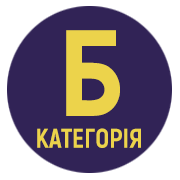DSP-REVERB: SOUND DESIGN FOR POPULAR MUSIC
Abstract
The article analyzes the specifics of the effects processor (reverb unit) operation for studio and live work, applying its algorithms to practice in pop music. A review of works by scientists and audio technologists dedicated to the peculiarities of sound director’s work with a classical digital stereo processor and innovative technologies for creating new sound libraries has been conducted. The special role of reverbation as an integral component in musical art is indicated, emphasizing the importance and significance of vocal and musical instrument sound design in stage and concert work. A detailed examination of reverb standards, delays, and modulation effects has been undertaken, ensuring their routing and configuration, demonstrating a flexible algorithm for modeling «room effects» for musical applications. The historical development of the musical-sound component has been reviewed, where reverbation was applied to enrich the sound of creative ensembles both on stage and in the recording studio, from the creation of artificial acoustic environments to the introduction in 1978 of the Reverb product line at the AES Convention by «Lexicon», which were considered the first commercially viable digital reverbation systems in the global audio industry. It is noted that the development of professional DSP (Digital Signal Processor) occurred in close connection with artists from the musical arts, which shaped the specific characteristics of sound coloring for singing voices and musical instruments. For a long time, Ukrainian stage practice has been shaping the foundations of cultural and artistic performances, where reverberation performs not only an illustrative function but also becomes an important means of characterizing vocal performances and instrumental compositions. The main aspects of the use of sound equipment are illustrated with examples from modern sound directing practice. It is noted that innovative DSP reverb units inspired the search for new means of expression and techniques in the musical and sound component of pop music, relevant for contemporary musical art.
References
Омельченко Т.А. (2014). До 90-річчя від дня народження Леоніда Анатолійовича Бильчинського: маестро звука. Часопис Національної музичної академії України імені П.І. Чайковського, 1 (22), 109–114.
Маковій Т.О. (2013). Творча та педагогічна діяльність вітчизняних звукорежисерів (на прикладі творчості заслуженого працівника культури України звукорежисера Леоніда Мороза) : дип. робота на здобуття освітньо-кваліфікаційного рівня «Магістр». Київ: НАКККіМ, 129.
Кущ Є.В. (2013). Електромузичний інструментарій як еволюційний фактор музичної культури XX – початку XXI століть: дис. … канд. мистецтвознавства: 26.00.01. Київ, 200.
Kantorik S. (2014). Convolution reverb & impulse responses. Capstone Projects and Master’s Theses, 365 p.
Reilly A., and McGrath D. (2017). Convolution processing for realistic reverberation. Audio Engineering Society Convention 98. Audio Engineering Society, 966–979.
Valimaki V., Parker J., Savioja L., Smith J., Abel J. (2012). Fifty Years of Artificial Reverberation. in IEEE Transactions on Audio, Speech, and Language Processing, 20, 5, 1421–1448.





